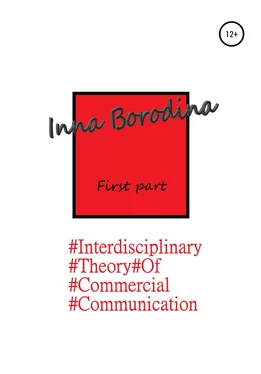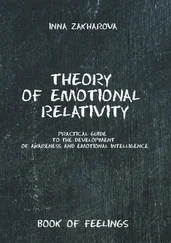Analysis of existing works in the direction of research revealed the following approaches to modeling1-3, 5-20: 1. Optimization models (Stigler G. 1961; Lambin J. J. 1966; Stegeman M. 1991; Bagwell K. 2002). 2. Models using game theory (Doraszelski U. 2003; Becker G.S. 1993): 2.1. Dynamic games (Erickson G. 1995; Dockner E. 2000; Roberts M. J. 1998; Gasmi F. 1992).
2.2. Risk-based games, passive models, competition models and models describing consumer reactions (Feichtinger G. 1994; Chintagunta P. K. 1996; Sorger G. 1989), as well as many others. 3. Dynamic models describing social and economic systems (Gavrilets Y.N., 1997; Terpugov A.F.,2001). 4. Dynamic models of information theory (Chernavsky D.S. 2004, 2005; Wilson A.D. 1970).
The purpose of the study is to identify patterns of changes in consumer demand under the influence of commercial communications.
To achieve the target, you must: 1. To reveal the structure of interaction of communication participants in the form of a dynamic system for managing the relations of communication participants. To study variations in the interaction of communication participants with a different number of elements in the interaction structure: one firm that sells consumer goods on the market and communicates with potential consumers through one information channel; one firm that sells consumer goods on the market and communicates with potential consumers through multiple information channels. 2. Describe mathematical laws and analyze two-parameter dependences of supply and demand (on the price of goods and advertising costs). 3. Create mathematical models based on quantitative parameters that describe the features of interaction between communication participants. 4. To study the dependences of changes in supply and demand in case of changes in advertising costs, and also changes in the psychological attitude of the buyer in case of changes in the frequency of advertising influences.
A hypothesis is an assumption that the market, being the sphere of relations between a buyer and a seller, in modern conditions includes information about the goods offered on the market as a controlling factor in interactions in the market. The interaction of these participants in market relations can be structured in accordance with the law of consumer demand and the law of supply of goods. The peculiarity of interaction – the usefulness of the sale and purchase of commercial information can reveal itself in a change in the consumption of goods.
Iterative learning (multiple messages to the market about the good) is interpreted as teaching, and the assimilation of information as the work of an adaptive system that "tunes" the consciousness of potential consumers. At the moment of a person's collision with a product, the formed intention in the form of quasi-need tends to "discharge", that is, to purchase a product.
When making a purchase, the knowledge obtained by the buyer is updated, takes the form of information, triggering the actual attitude of the individual, which ensures a stable, purposeful nature of the course of the product choice. A person's memory is used by the seller as a stimulus for the growth of the usefulness of the purchase of a product to which the information obtained by a person through marketing communication pushes21.
Research methods and tools: statistical and analytical studies of socio-economic market phenomena, mathematical modeling, econometrics, numerical methods, cognitive analysis, systems theory and systems analysis, elements of the theory of agent modeling, elements of the theory of contracts, elements of the theory of transaction costs, elements of the theory of organization, social relations, informational economic theory, behavioral economics, neurophysiological research, theory of differential equations, elements of gestalt psychology, philosophy, predicate logic and semantics.
Communication, in modern economic conditions, acquires the properties of a strategic resource, the skillful use of which leads to an increase in the value of the company's market assets. In light of this, sellers who initiate communication face the problem of solving communication difficulties to attract buyers. The process of mass communication is investigated from the standpoint of increasing the density of the seller's information field by increasing the number of information channels, that is, we will analyze the structure and qualitative characteristics of the system in the presence of several channels of mass communication.
The behavior of individual buyers in the system is generalized and considered as a set of decisions of a behaviorally indivisible group (hereinafter potential consumers) with the following characteristics: the number of potential consumers; belonging to the consumer segment; the suggestibility of the group; frequency of group contact with communication channels. The reactions of potential consumers are localized to the level of analysis of the market behavior of a single individual, based on the fact that his reactions are characteristic of the behavior of each member of the set under consideration.
The characteristic of potential consumers is the demand in the time interval, which reflects the reaction of the target audience to the price offer and advertising information.
The publication of commercial information in the media through several information channels creates a synergistic effect, as a result of which the information impact is likely to increase.
The analysis of the developed cognitive and mathematical models of the influence of commercial communications on consumer demand is carried out. Analysis of the structure of the interaction of system elements shows that the density of the information field is characterized by a high degree of filling, this is reflected in the formal notation of the mathematical model of socio-economic relations in the form of a significant filling of systems of homogeneous differential equations (ODE). As already noted, when advertising is published in the media and on several information channels, an overlap of audiences of different information carriers occurs, that is, the information field of each channel (in the case of several communication channels) is compacted with a certain probability. The greater or lesser probability of the compaction of the information field of one of the channels at the expense of the other is determined by the real characteristics of the advertising channel (for example, TV programs are watched more often than they listen to radio, etc.). Proceeding from the principle of the most probable chain of events, taking into account the indicated restrictions on the probabilities of states of elements of the mass communications control system, it is possible to formulate equations describing the state of the system stable in time.
1. METHODOLOGY FOR MODELING COMMERCIAL COMMUNICATION AS AN INFORMATION FLOW
1.1. The sequence of research about communication as an information flow
By commercial communication we mean any form of communication developed for direct or indirect promotion (for financial purposes) of goods, services or the image of a company, organization or individual carrying out commercial or industrial activities or working in a specific professional field.
Commercial communication is seen as a means of creating a benevolent attitude towards a product offer, as well as a tool to convince a potential audience of the need to purchase a specific product, only a specific company. The analysis of existing developments showed that the problem of the effect of communication in the formulation of the problem begins with the choice of the "quality" of interaction, then an economic parameter is determined, which will be influenced by the influence of information, the type of markets is set (monopoly, duopoly, oligopoly), and as a result, a method of modeling and acceptable mathematical apparatus.
Читать дальше












